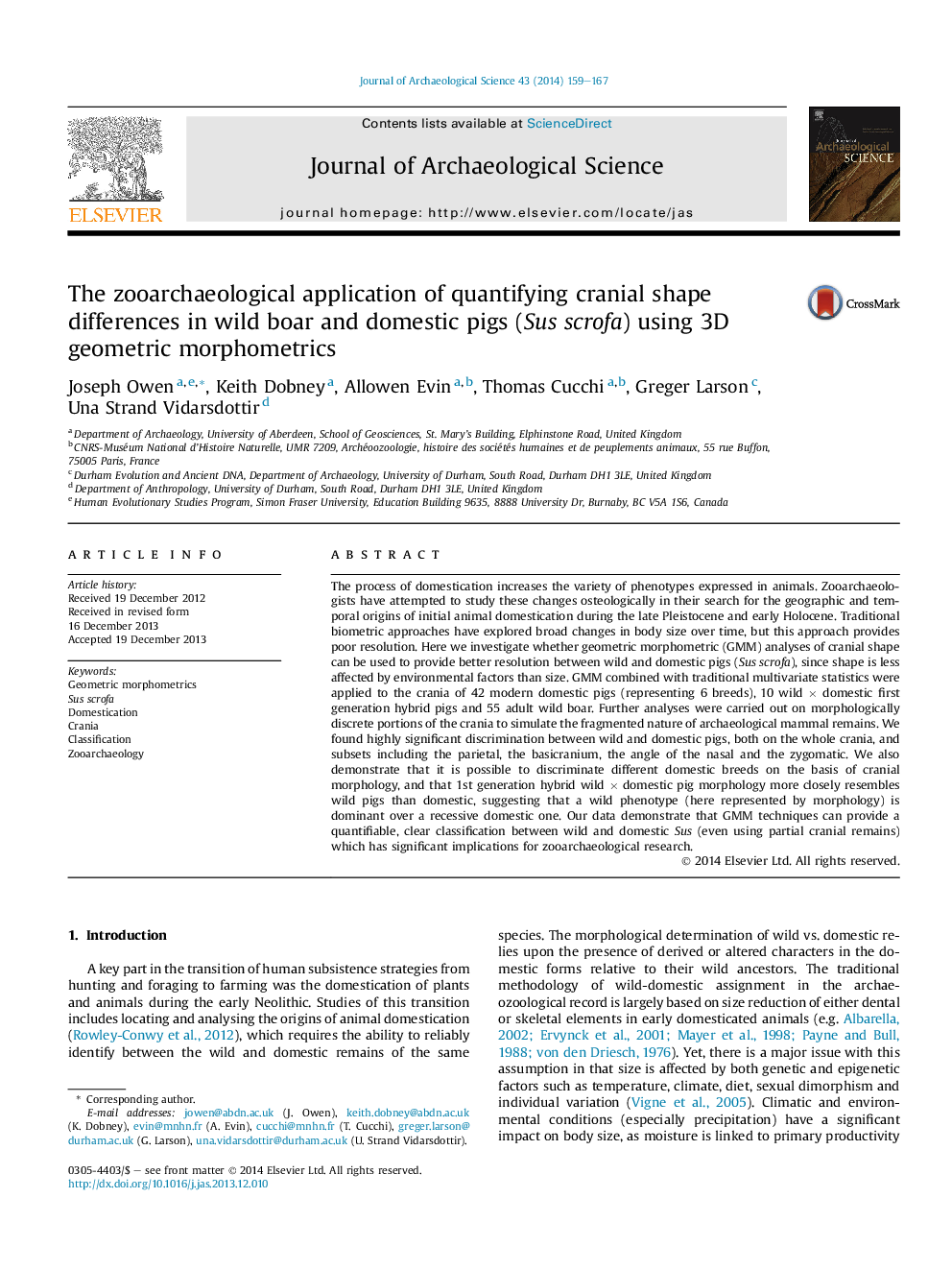| کد مقاله | کد نشریه | سال انتشار | مقاله انگلیسی | نسخه تمام متن |
|---|---|---|---|---|
| 7443624 | 1483917 | 2014 | 9 صفحه PDF | دانلود رایگان |
عنوان انگلیسی مقاله ISI
The zooarchaeological application of quantifying cranial shape differences in wild boar and domestic pigs (Sus scrofa) using 3D geometric morphometrics
دانلود مقاله + سفارش ترجمه
دانلود مقاله ISI انگلیسی
رایگان برای ایرانیان
کلمات کلیدی
موضوعات مرتبط
مهندسی و علوم پایه
مهندسی مواد
دانش مواد (عمومی)
پیش نمایش صفحه اول مقاله

چکیده انگلیسی
The process of domestication increases the variety of phenotypes expressed in animals. Zooarchaeologists have attempted to study these changes osteologically in their search for the geographic and temporal origins of initial animal domestication during the late Pleistocene and early Holocene. Traditional biometric approaches have explored broad changes in body size over time, but this approach provides poor resolution. Here we investigate whether geometric morphometric (GMM) analyses of cranial shape can be used to provide better resolution between wild and domestic pigs (Sus scrofa), since shape is less affected by environmental factors than size. GMM combined with traditional multivariate statistics were applied to the crania of 42 modern domestic pigs (representing 6 breeds), 10 wild Ã domestic first generation hybrid pigs and 55 adult wild boar. Further analyses were carried out on morphologically discrete portions of the crania to simulate the fragmented nature of archaeological mammal remains. We found highly significant discrimination between wild and domestic pigs, both on the whole crania, and subsets including the parietal, the basicranium, the angle of the nasal and the zygomatic. We also demonstrate that it is possible to discriminate different domestic breeds on the basis of cranial morphology, and that 1st generation hybrid wild Ã domestic pig morphology more closely resembles wild pigs than domestic, suggesting that a wild phenotype (here represented by morphology) is dominant over a recessive domestic one. Our data demonstrate that GMM techniques can provide a quantifiable, clear classification between wild and domestic Sus (even using partial cranial remains) which has significant implications for zooarchaeological research.
ناشر
Database: Elsevier - ScienceDirect (ساینس دایرکت)
Journal: Journal of Archaeological Science - Volume 43, March 2014, Pages 159-167
Journal: Journal of Archaeological Science - Volume 43, March 2014, Pages 159-167
نویسندگان
Joseph Owen, Keith Dobney, Allowen Evin, Thomas Cucchi, Greger Larson, Una Strand Vidarsdottir,